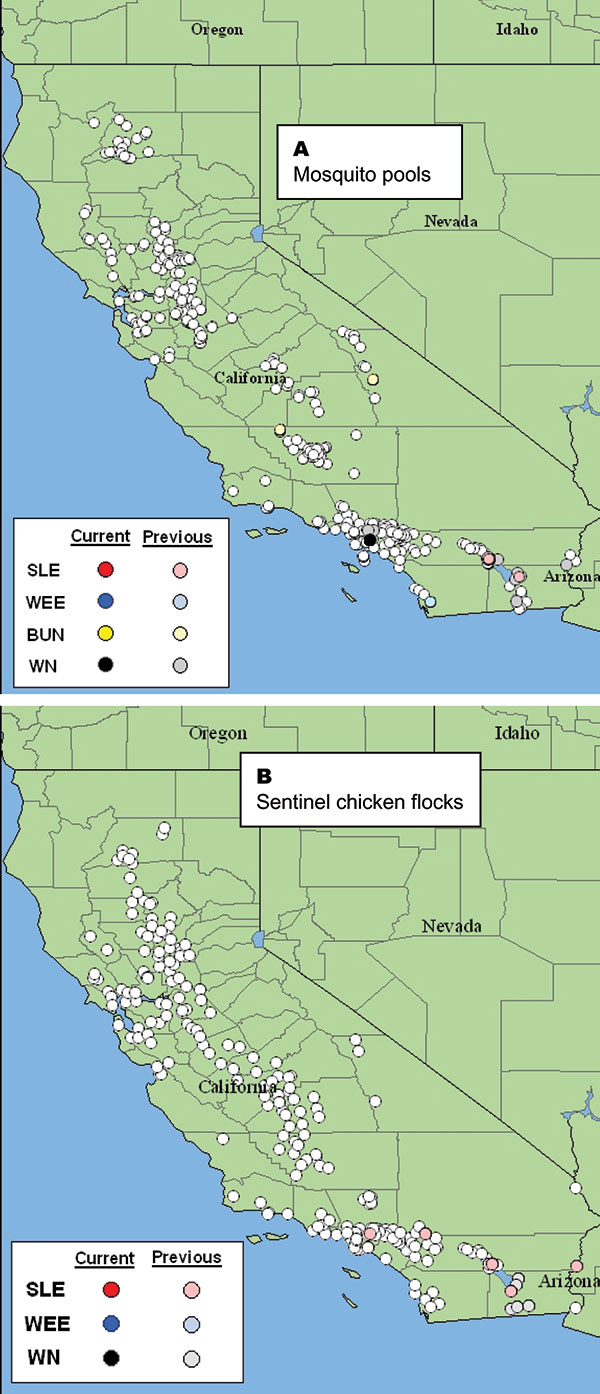Volume 10, Number 8—August 2004
Research
West Nile Virus in California
Figure 1

Figure 1. Map of California showing locations where (A) 9,731mosquito pools were collected and (B) 212 sentinel chicken flocks were located through November 1, 2003. Data are cumulative for 2003 and show negative, previously positive, and currently active sites as downloaded from http://www.vector.ucdavis.edu/. SLEV, St. Louis encephalitis virus; WEEV, western equine encephalitis virus; BUNV, viruses in the California encephalitis virus complex, family Bunyaviridae; WNV, West Nile virus.
1Procedures for the bleeding and husbandry of sentinel chickens were described in Protocol 9608 approved by the University of California, Davis, Animal Use and Care Administrative Advisory Committee.
2The collection, banding, and bleeding of wild birds were conducted under Protocol 9605 approved by the Animal Use and Care Administrative Advisory Committee of the University of California, Davis, California Resident Scientific Collection Permit 801049-02 by the State of California Department of Fish and Game, and Master Station Federal Bird Marking and Salvage Permit 22763 from the U.S. Geological Survey Bird Banding Laboratory.